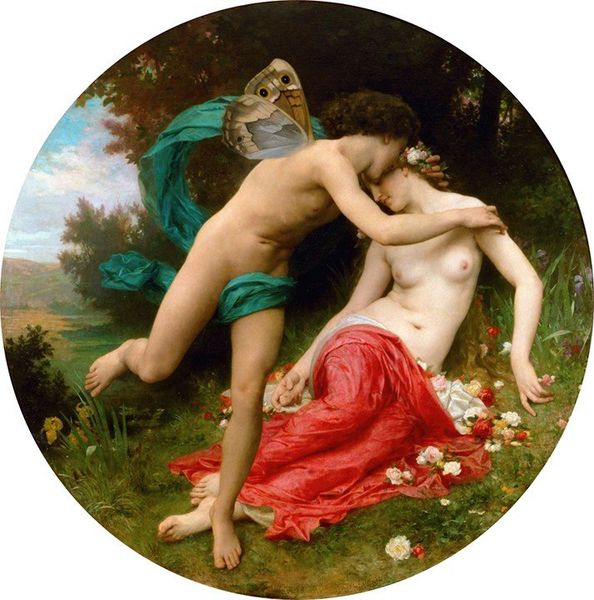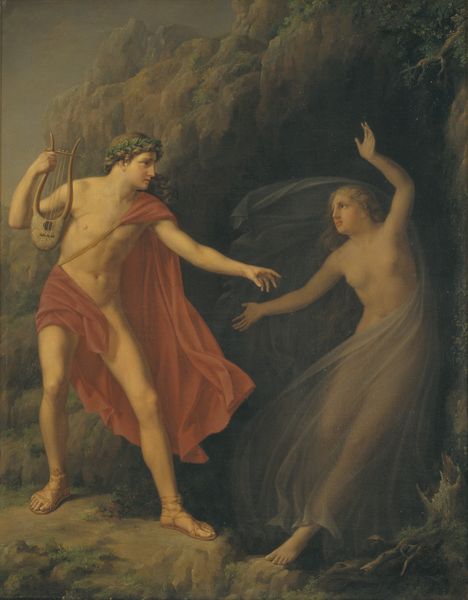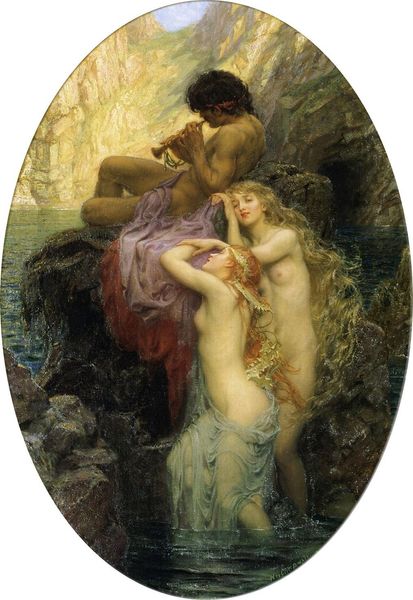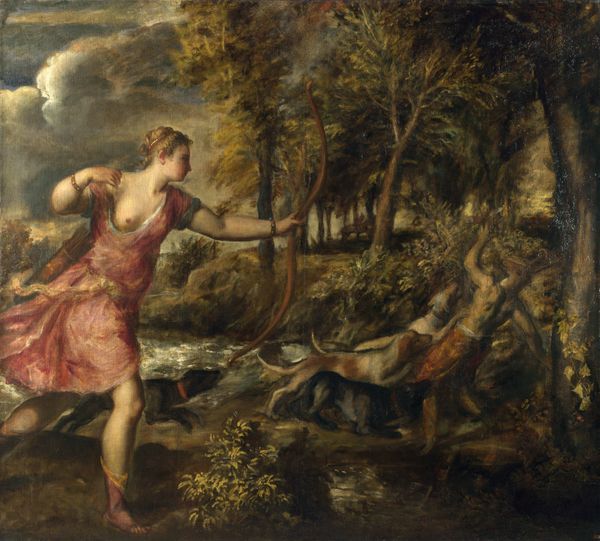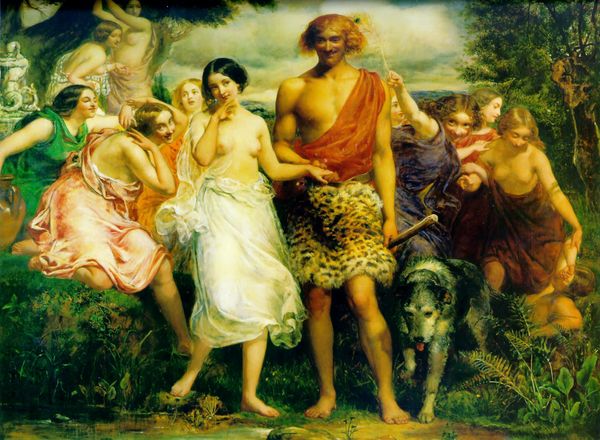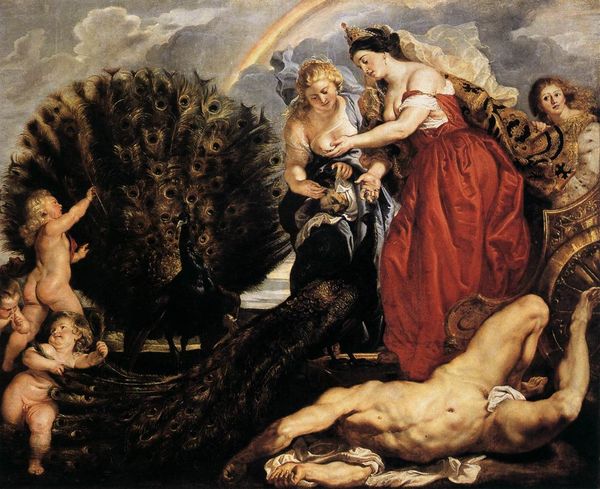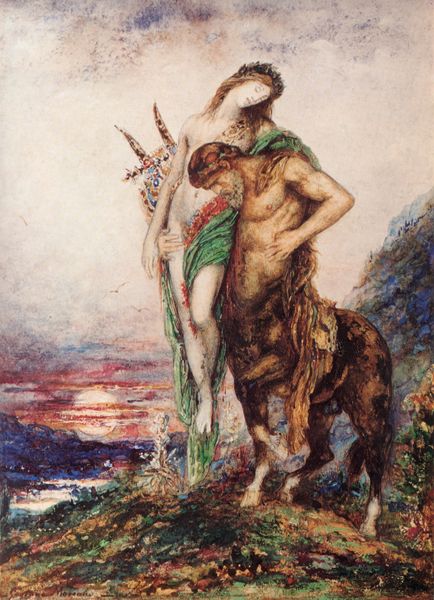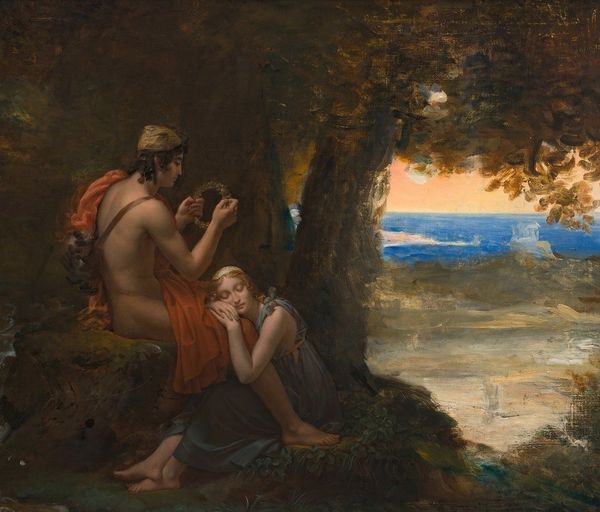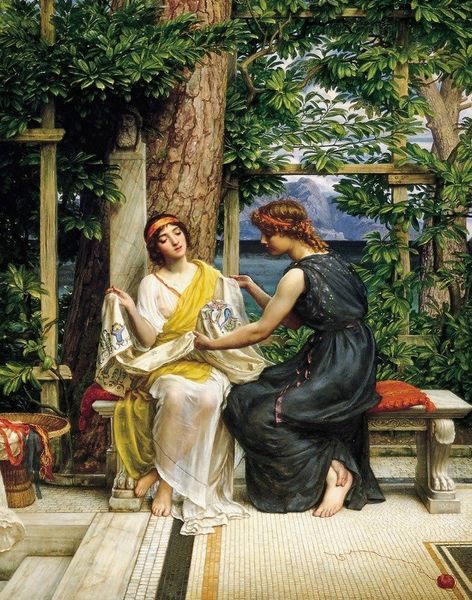
Dimensions: 142.88 x 111.44 cm
Copyright: Public domain
Curator: Here we have John William Waterhouse's painting, "Apollo and Daphne," created in 1908. The medium, of course, is oil on canvas. Editor: My first impression is one of profound disquiet, a feeling of being trapped. The figures appear to be caught in an eternal struggle within the depths of this forest. Curator: Indeed, Waterhouse masterfully composes the scene to convey just that. The dark, almost claustrophobic arrangement of the foliage emphasizes the compression of Daphne's form. Her body, it appears, is becoming integrated with the arboreal surroundings, with intertwining branches. Note the careful attention to detail in rendering the textures, creating depth and, I agree, tension. Editor: Beyond the texture, look at the symbolic weight. The myth itself, Apollo's infatuation and pursuit, and Daphne's desperate escape—it all speaks to the fraught dynamics of desire and transformation. Her metamorphosis into a laurel tree is a rejection of Apollo's advances, a potent symbol of female autonomy. Curator: A reading that holds well under scrutiny. Consider Apollo, draped rather elegantly, his forward motion countered precisely by Daphne's petrified retreat. The diagonals established by their bodies generate significant compositional dynamism, a clear visual echo of the story's unfolding action. Even the subtle contrast of Apollo's vibrant palette and Daphne's more muted coloration amplifies this push-pull. Editor: It's also about metamorphosis beyond just Daphne, isn’t it? The river flowing behind Apollo, the almost classical composure of the figures—these all suggest transformations of culture, from the Ancient world that this artwork references to its contemporary Edwardian viewership, perhaps yearning for lost gods and nymphs in modern industrializing society. Curator: You suggest a meta-narrative regarding our contemporary engagement with the artwork and the society within which Waterhouse painted, but perhaps it is best for us not to reduce such careful deployment of light and shade into too neat a conceptual reading? Editor: Fair enough, but there’s so much encoded here! The way the laurel leaves partially obscure Daphne's form; the desperate upward reach of her hand—they collectively form an iconic statement, I think, on the loss of agency when confronted with unwanted attention. Curator: An elegant observation. So many facets to consider when encountering Waterhouse’s work, its engagement with line, form, light, color… Editor: And all those symbols… which combine into something powerful and moving. Thank you.
Comments
No comments
Be the first to comment and join the conversation on the ultimate creative platform.


